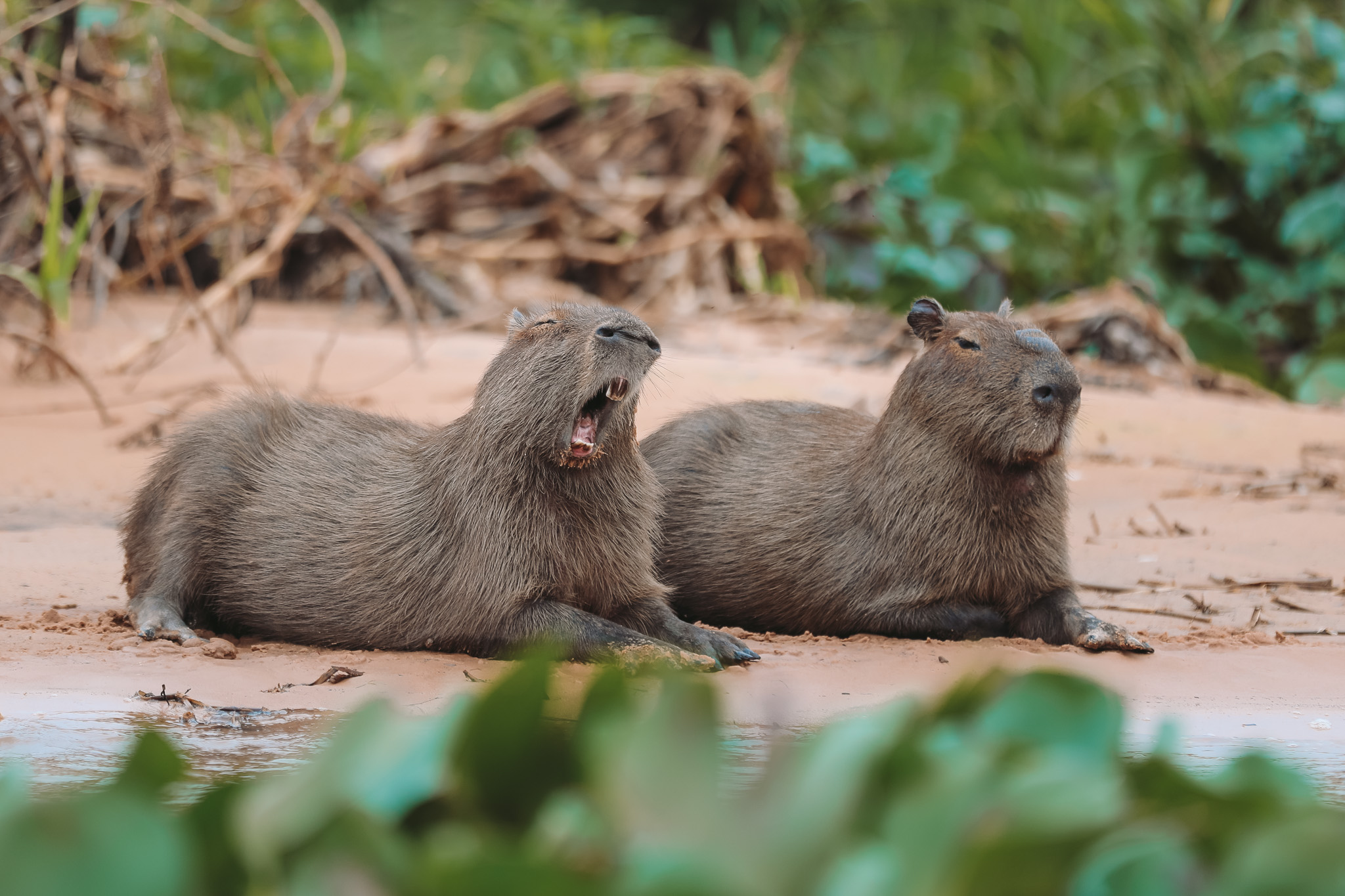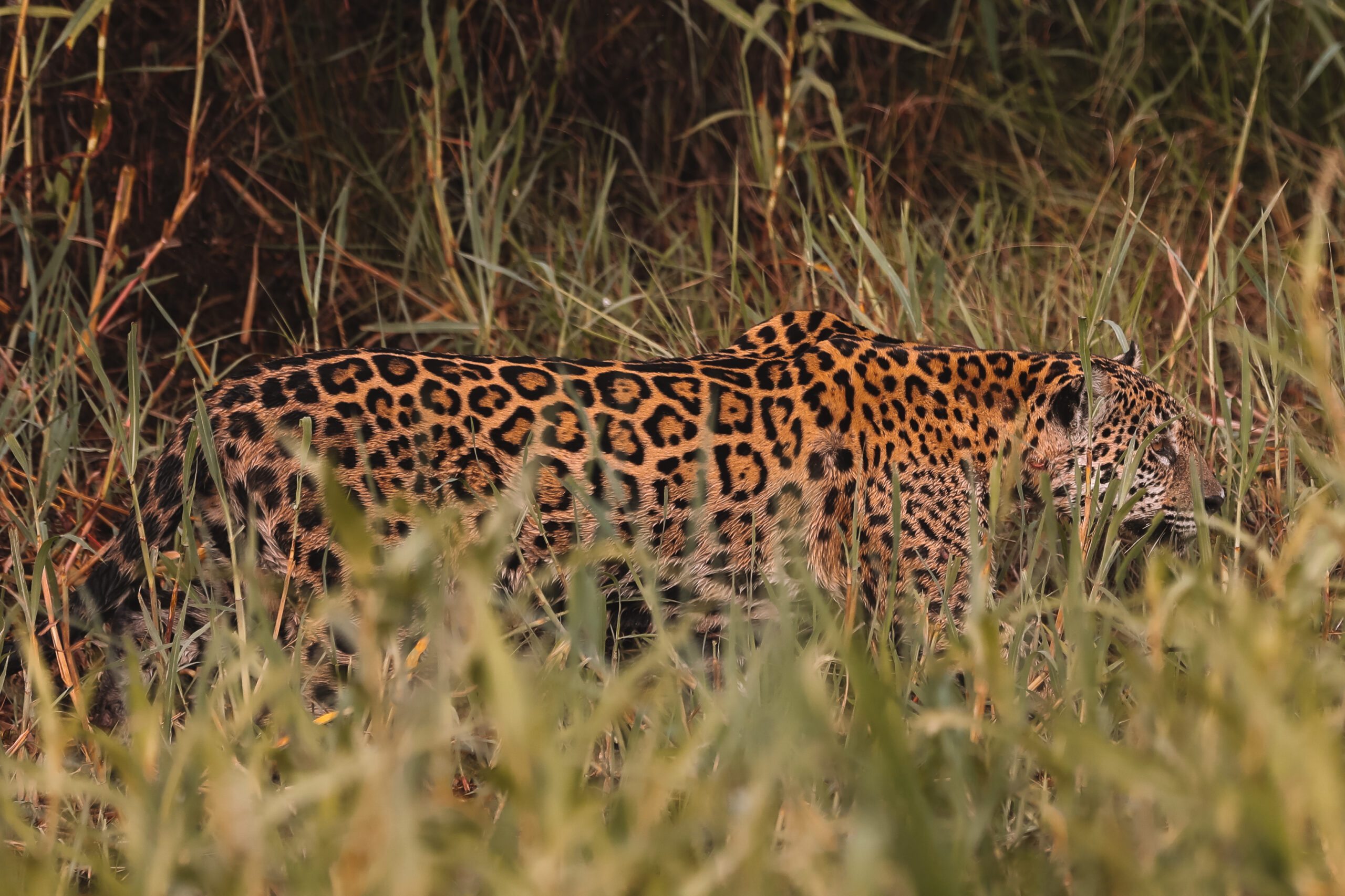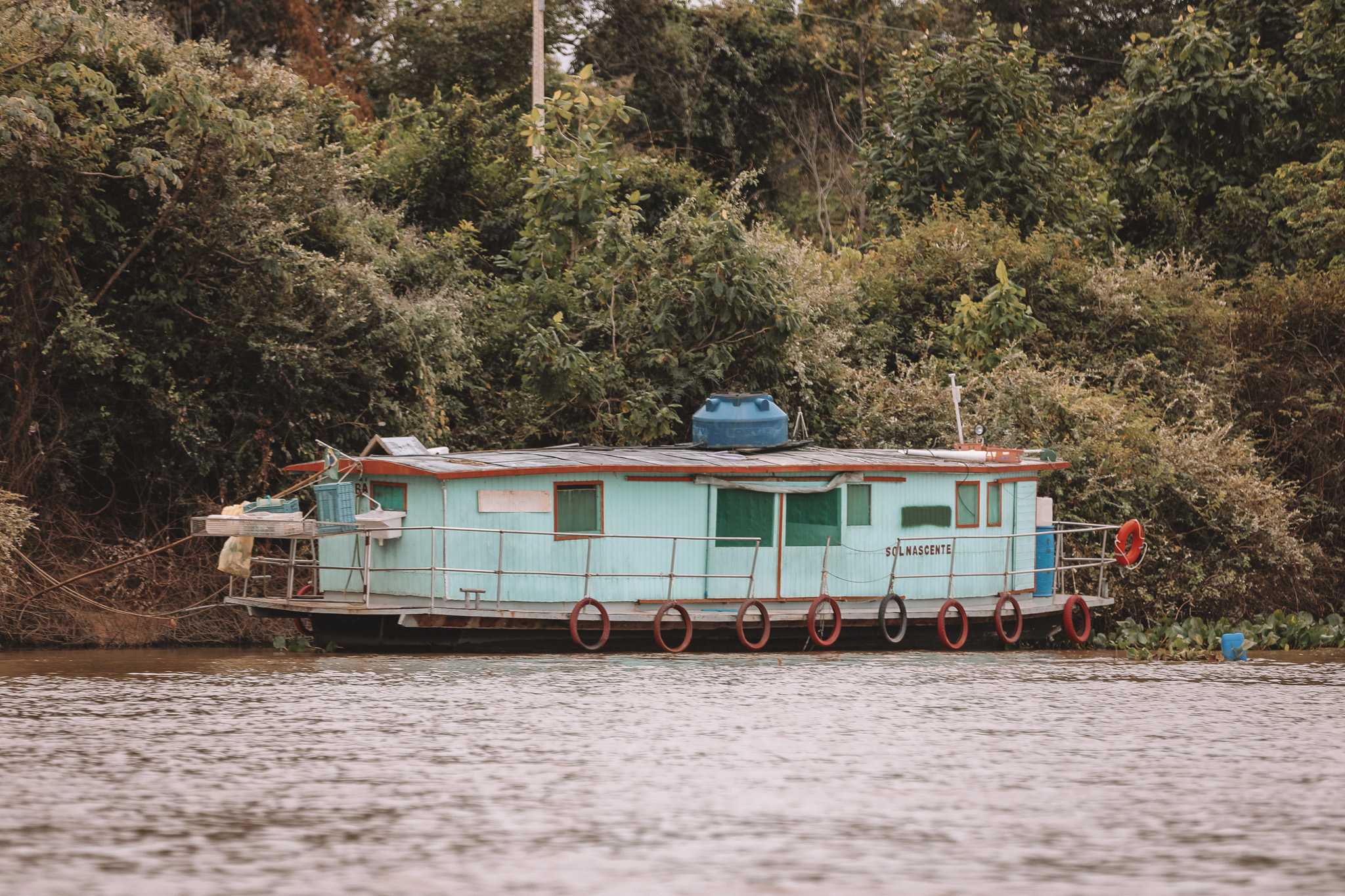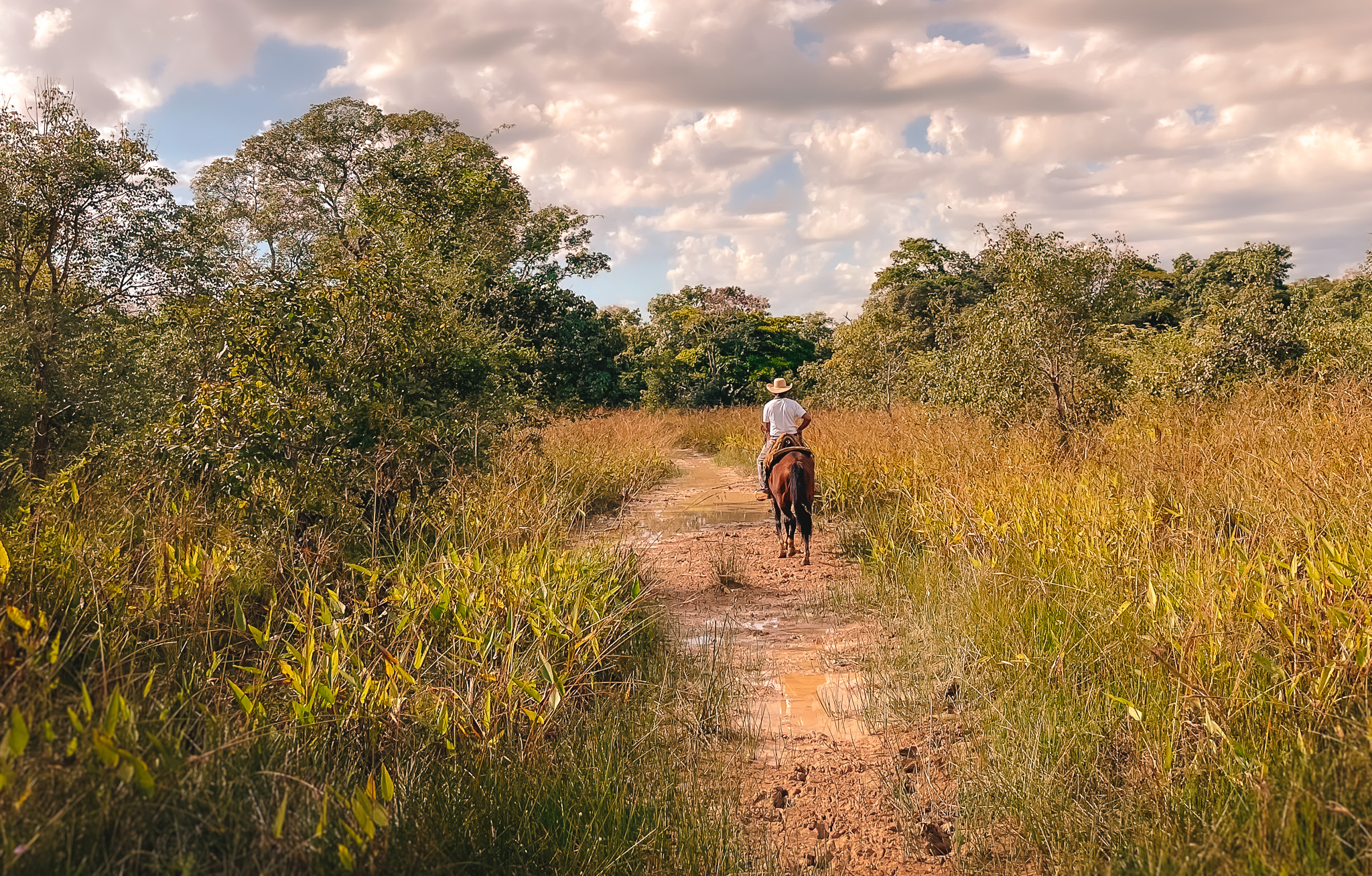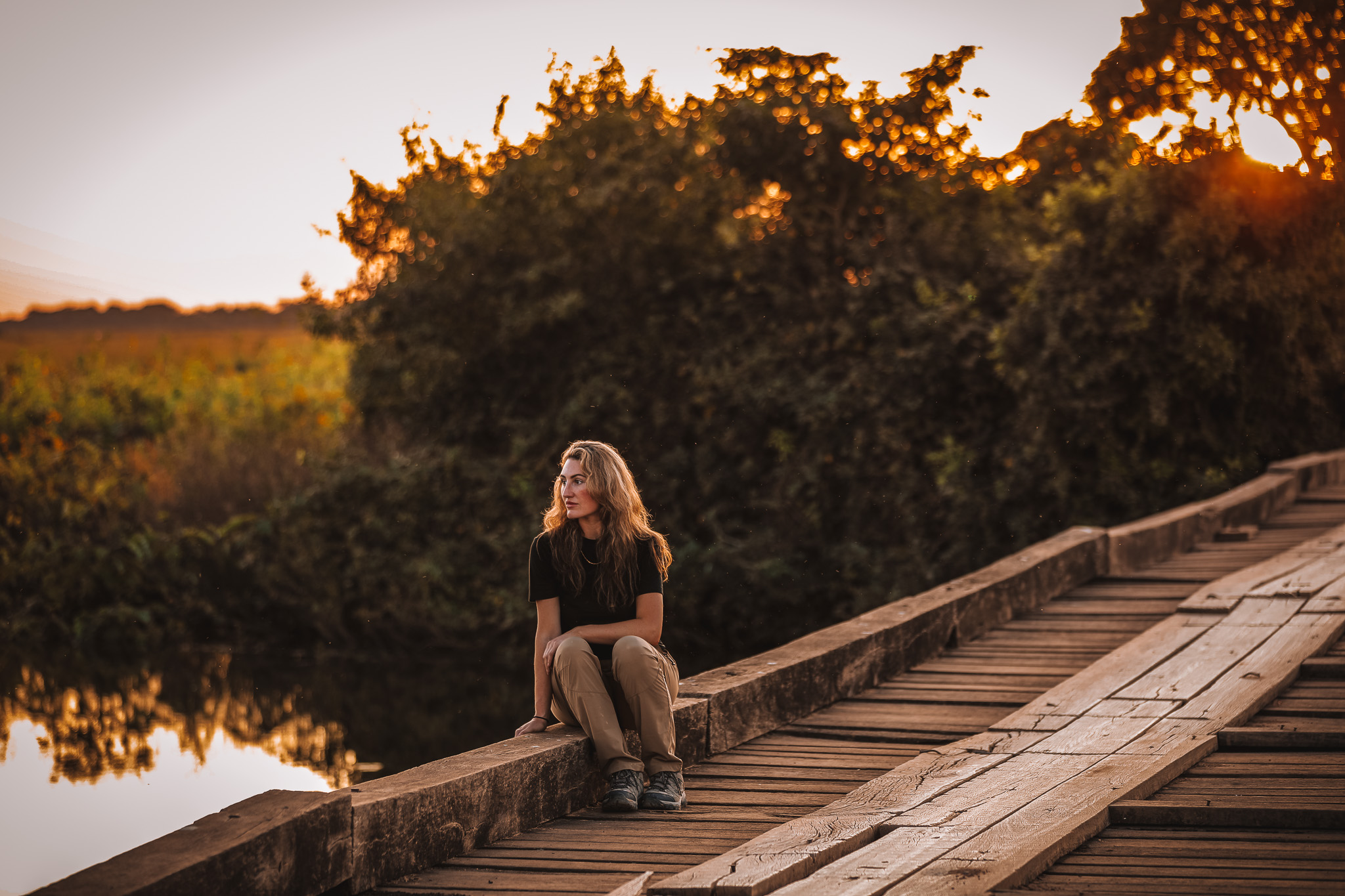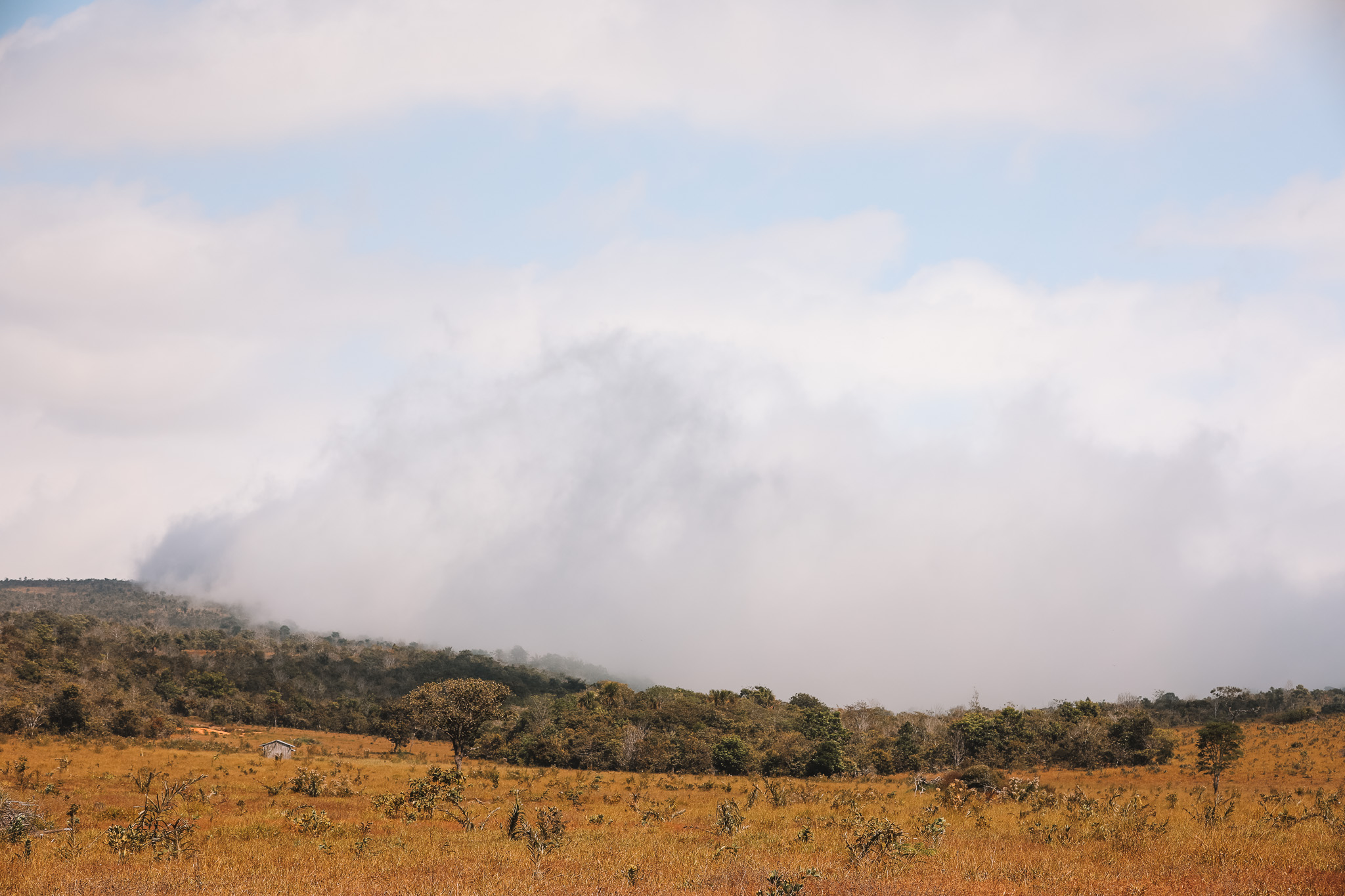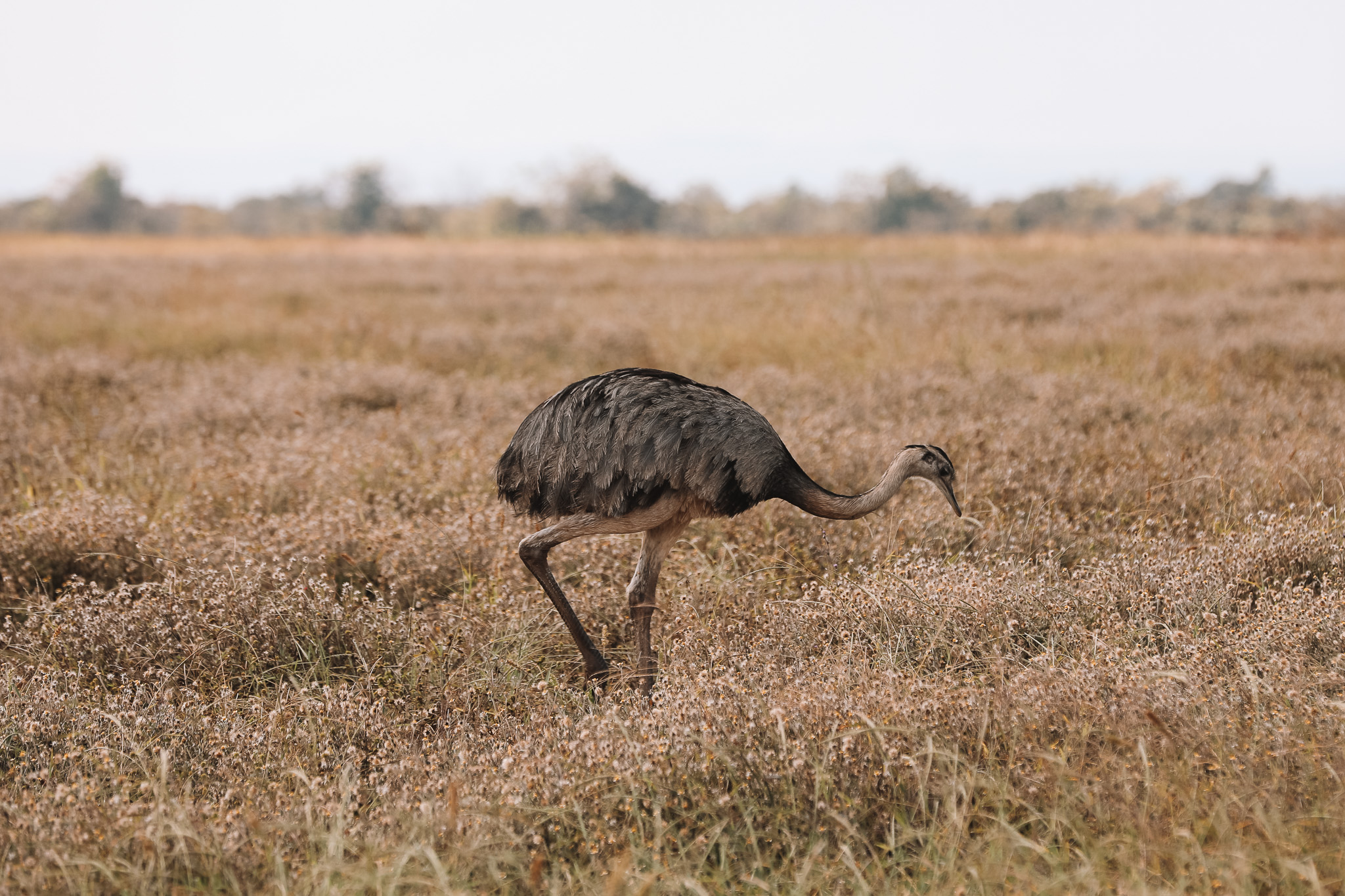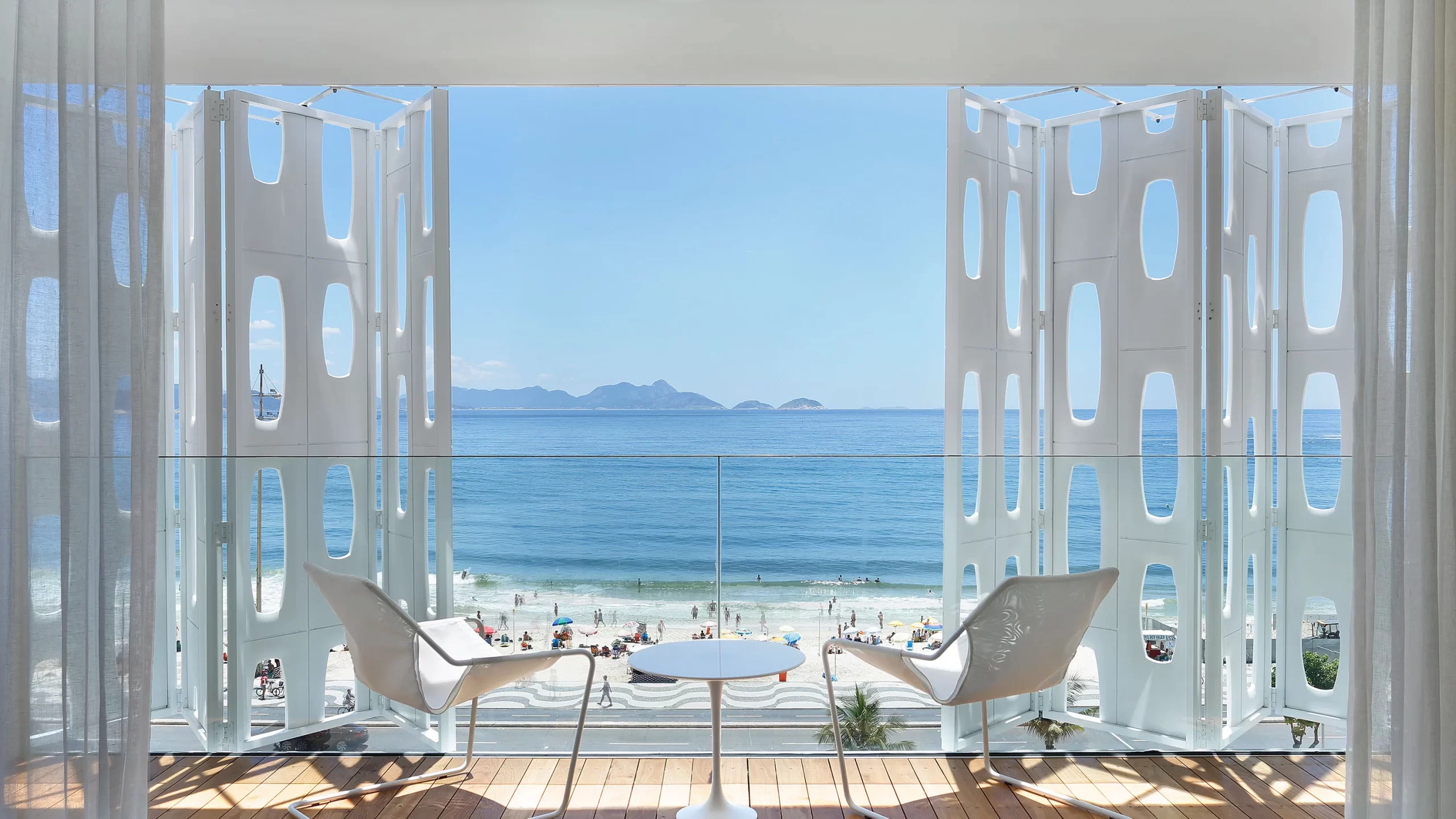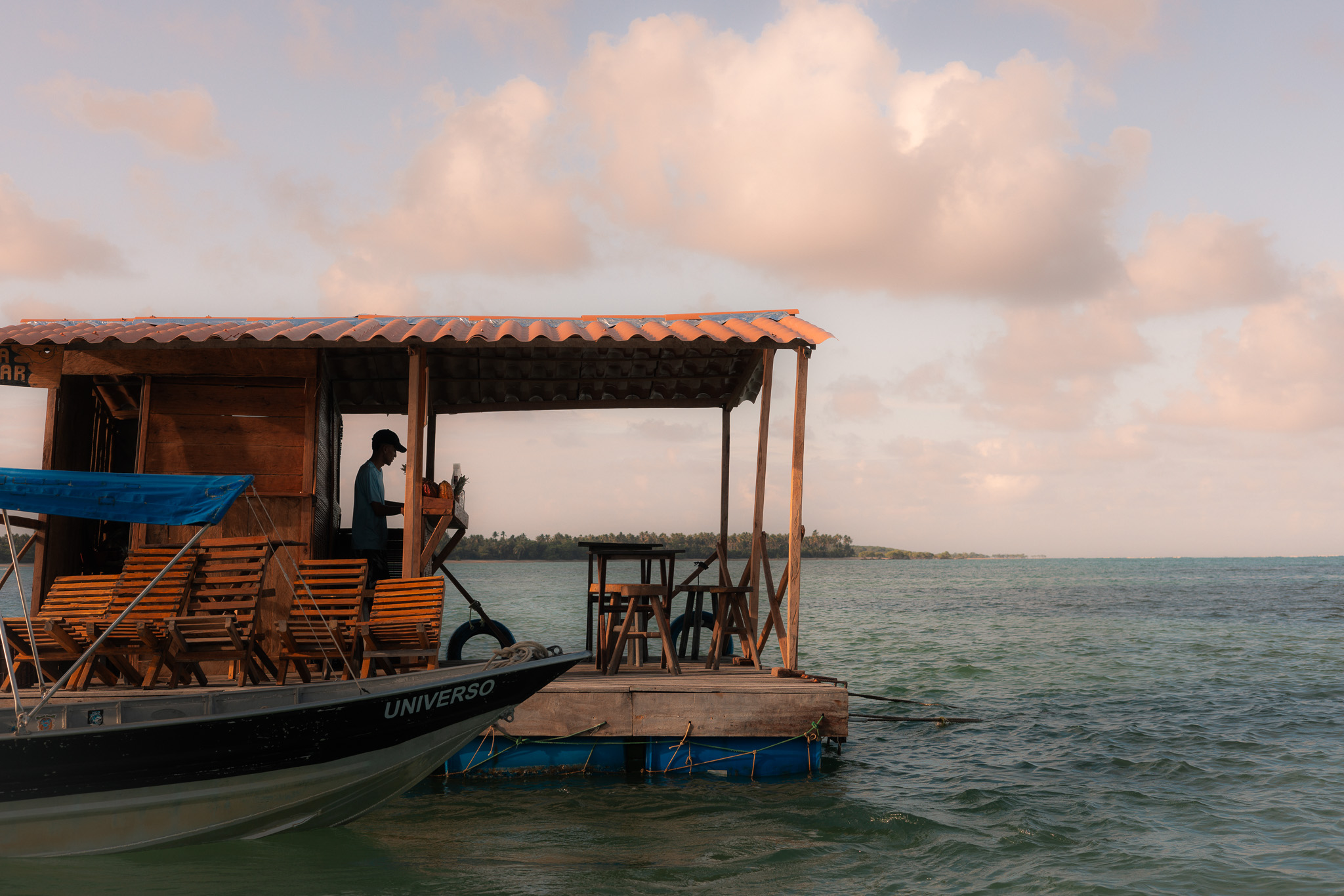Jaguar Wishes and Capybara Dreams
Imagine a place where wild macaws dressed in sapphire-hued feathers are perched outside of your bedroom window, a place where cowboys fearlessly trudge through chest-deep caiman-infested waters on horseback, and a place so untouchable to the rest of the world — it is underwater for more than six months a year.
Set in the beating heart of South America, the borders of Bolivia, Paraguay, and Brazil’s Amazon cradle the largest wetland on the planet. Stretching beyond 42 million acres, the Pantanal covers an area that effortlessly dwarfs the size of England. While it may not be easily recognized like its infamous neighbor, the Amazon, intrepid travelers and wildlife experts know that there are actually far better opportunities to see exotic species south in the Pantanal. Thanks to its vast, open landscape, the odds are increasingly in favor for those who make the pilgrimage to catch a glimpse of Brazil’s golden-flecked royalty — the jaguar.
My fiancé and I stumbled on the Pantanal by pure chance. Wind back the clock to the COVID era, we were restless vagabonds confined to our tiny apartment in Miami, Florida. Every night, we dug up whatever travel and wildlife documentaries we could uncover on YouTube (with a few glasses of wine, of course). One night deep into lockdown, we found ourselves watching a decades-old documentary on the jaguars in Brazil from the 1980s. Despite the poorly produced, grainy video quality, and borderline cheesy voiceover, we knew we had found something special. What perplexed us, even more, was that there really wasn’t much newer content produced about the area. It also reminded us of our beloved Everglades neighbor that we frequently escaped to in an unpredictable pandemic world. Our curiosity was sparked.
About a year later, and after several connecting flights totaling 17 hours, the journey finally began as our aging plane descended into the local airport of Cuiabá. I will never forget the way towering green trees dotted the landscape. Fine mist billowed through them, soaked with the dawn’s warm, golden light beaming from the Tropic of Capricorn. The horizon looked hot and humid, and I could see the airstrip sizzling like a warm skillet in the heat below. I couldn’t help but feel like I was stepping into an adventure book from my childhood. Being a little girl who grew up on farms in a rural town in Massachusetts, I spent many summers lying in the hayfields daydreaming of far-flung places until the sky turned blue with stars. As each cloud floated by, I wondered where they were going, and wondered if I would ever have the chance to go there, too.
As the pilot straightened out the aircraft for its approach, my gaze wandered to the corner of the airfield with several small airplanes twisted and warped into a mangled pile of steel staring back at me. I took a deep breath, closed my eyes, and eased my head against the plush rust-colored headrest manufactured in another lifetime. With another deep exhale, our tires flirted with the asphalt for a fleeting thought, followed by a violent collision with the Earth’s surface seconds later.
The Road to Aymara
We struggled to communicate in Portuguese with the one woman working in the empty and dark baggage claim. That was how we first met our guide, Regina, her hiking boots echoing in the empty airport as she rounded the corner past the armed security guard. Her warm smile and brown shoulder-length curls bounced with each step, naturally at ease in a full hiking getup. Despite knowing her for only a few minutes, we felt immediately at ease, as if we were seeing an old friend for the first time in years. “Don’t worry about it, the luggage is only 7 hours away in São Paulo. But let’s get moving, we have a three-hour drive ahead of us. The bags — filled with everything we needed for the next month — will get to where we’re heading. No worries.”
Tired from the journey, we slept most of the car ride with Regina and Marlon, our driver, from the next closest city. Regina cleared her throat as we approached the wooden sign straddling a dirt road that stretched as far as the eye could see. It was as if an artist painted a long stroke of orange sienna-hued paint right across the face of the earth. Canopies of trees dotted an endless horizon on both sides of the 90-mile dirt road ahead of us, with blossoming pink jacarandas accenting the new landscape. The jacaranda’s blush-colored flowers drifted in the breeze as if they welcomed us to the only way to enter the Pantanal by land. Officially known as the Transpantaneira, the road was built as a government-funded megaproject in the 1970s in hopes of bringing economic opportunities to a widely remote region. Military engineers plowed a super highway through the Pantanal from Poconé to Corumbá, but quickly found they were no match against Mother Nature and the Pantanal’s wildly aquatic world. The project was abandoned after 90 miles at Porto Jofre, a fishing village on the shores of Rio Cuiabá.
Over the years, the former highway has transformed into a precarious bumpy road that is connected by 126 wooden bridges in various states of disrepair, which often get worse the deeper south you penetrate the Pantanal. It's often up to the local lodges or nearby ranchers who repair the bridges themselves. Despite it being quite overgrown in spots, the earth was cleared away for the highway’s construction, leaving holes that have naturally become ponds, canals, and lagoons that attract a wealth of wildlife. Even with my untrained eye, it became quickly apparent that this area contains hundreds of species of birds. I hear familiar squawking as one of my favorite birds, green parakeets, fly overhead. Noisy, boisterous, and a bit comical, a group of them seemingly welcome us to the Pantanal as they move their lively party to the next shady tree. Regina tells us that life in this part of the world revolves around the ever-changing landscape. Each year torrential rains fill the enormous Pantanal basin, creating a vast network of flooded plains, spanning across an area ten times the size of the Florida Everglades. As the seasonal downpour begins to stop, water slowly drains into the Paraguay River, leaving behind fish and snail-filled pools that attract huge flocks of egrets, storks, and spoonbills. Even Pantaneiros, the local gauchos, move their cattle herds in sync with the water.
Out of 42 million acres the Pantanal encompasses, only 5% is protected. The other 95% percent, 39.9 million acres to be exact, is privately owned for cattle grazing. I take a deep breath of the humid, thick air, and can’t help but wonder if this beautiful place will be left to future generations, or if it will succumb to economic gain, like much of the Amazon is today. I wonder if the symphony of the Pantanal, an orchestra comprised of cicadas, growls of caiman, and hundreds of birds in heavy air will be around for my future children and descendants to listen with their own ears. I wonder if the orange sky will be the same for them, as it was for me, as the sun made its final descent over the horizon. With just hours entering the edge of the Pantanal, I knew it was a special place worth fighting for.
Share this story
